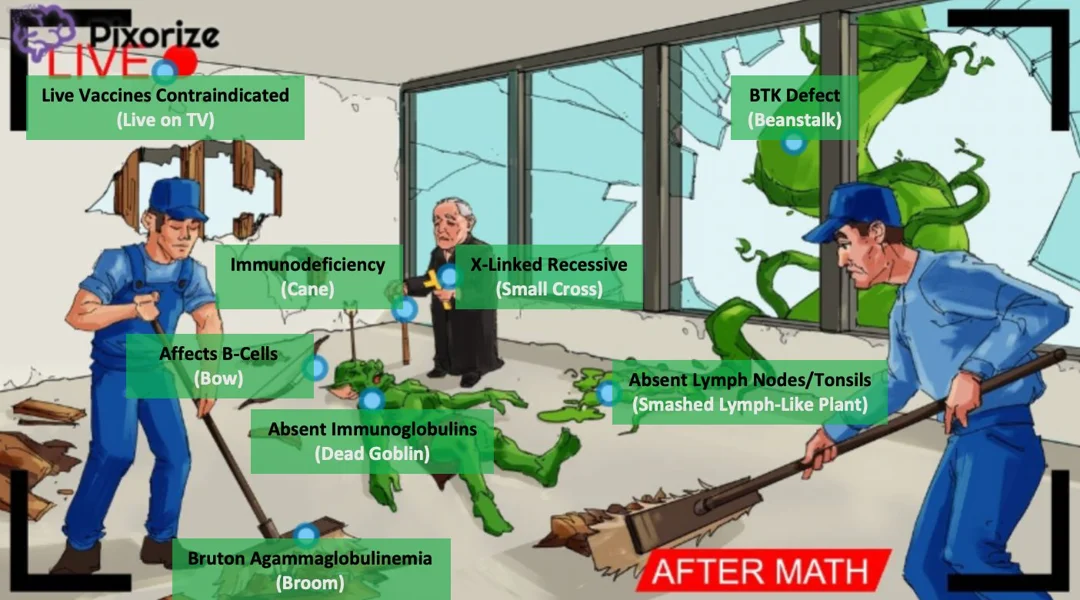
- Definition: X-linked recessive disease that causes a complete deficiency of mature B lymphocytes
- Epidemiology: occurs mainly in boys
- Etiology: defect of Bruton tyrosine kinase (BTK) expressed in B cells → complete deficiency of mature B cells
- Clinical features: Symptoms develop between 3 and 6 months of age when maternal IgG levels in fetal serum start to decrease.
- Hypoplasia of lymphoid tissue (e.g., tonsils, lymph nodes)
- Recurrent, severe, pyogenic infections (e.g., pneumonia, otitis media), especially with encapsulated bacteria (S. pneumoniae, N. meningitidis, and H. influenzae)
- Hepatitis virus and enterovirus (e.g., Coxsackie virus) infections
- Diagnosis
- Flow cytometry
- Absent or low levels of B cells (marked by CD19, CD20, and CD21)
- Normal or high T cells
- Low immunoglobulins of all classes
- Absent lymphoid tissue, i.e., no germinal centers and primary follicles
- Flow cytometry
XLA vs CVID
- XLA presents early (infancy) due to a complete failure in B-cell development from birth.
- CVID presents later (pubertal or post-pubertal) because it involves a gradual decline in B-cell function, leading to a delayed onset of immune deficiency symptoms.